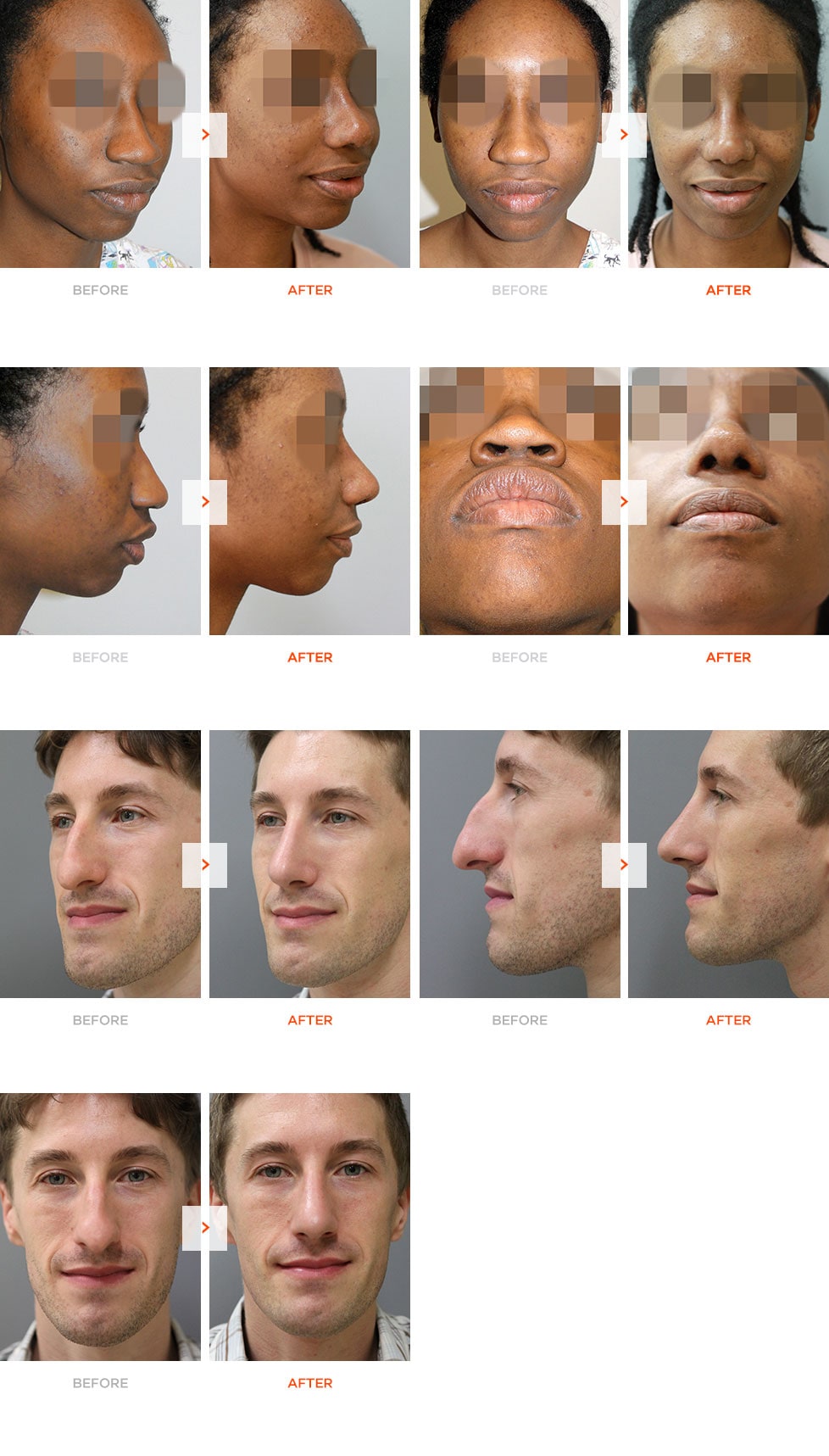Ethnic
Rhinoplasty
“What Is Ethnic Rhinoplasty?”
Ethnic rhinoplasty is a nose surgery to create an aesthetically pleasing nose shape but retaining distinct characteristics that are unique to each ethnic group. Back in the 80s and 90s, the mainstream of a rhinoplasty was based on the Caucasian nose shape which was not suitable for other ethnic groups such as Asian, African American, and Middle Eastern. Today’s advanced rhinoplasty approaches to an individual beauty that embraces the heritage and enhances a beauty rather than creating a universal nose design. There is a growing desire in recent patients to get a total cosmetic surgery to fit the overall balance and proportion of the face, instead of a simple nose surgery. Ethnic rhinoplasty requires a full understanding of certain ethnic groups and extensive rhinoplasty experiences to adjust the details according to the needs.
Doctor’s Message
Every ethnicity has distinct condition characteristics such as skin, tissues, cartilage, and bone. It is important to find an experienced surgeon who has various experiences in performing rhinoplasty for different ethnic groups. In general, Asians and African Americans tend to have poor tip projection, thick skin, bulbous nose, and weak septal cartilage. These groups of people need the surgeon to ‘build up’ their nose structure using the septal or rib cartilage which is opposite of the Western Caucasian or Middle Eastern rhinoplasty. Western Caucasian and Middle Eastern rather have bulky septal cartilage, excess projection, droopy, or hump nose. For many of the cases, the septal cartilage is mainly used for their nose surgery instead of rib cartilage since they have enough amount of septal cartilage.
Operation Information
- Surgery Time : 2-3 Hours
- Anesthesia Type : IV Sedation or General Anesthesia
- Hospitalization : 0-1 Day
- Stitch Removal : 5-10 Days
- Recovery Time : 10 Days
Ethnic Rhinoplasty Surgery Method
In Asia, many people use foreign implants such as silicone and Goretex to augment or elongate the nose. Unfortunately, when inserting these implants, there is a high chance of complications such as infection, displaced silicone, extrusion, and skin thinning. Thus, most Asian noses require a surgery using autologous cartilages which include the elongation of the nose, projection of the tip, as well as augmentation of dorsum and mid-face. If the use of foreign implants is inevitable, partial use of silicone implant only at the nose bridge may be helpful. The combination of silicone implant and autologous tissue are common rhinoplasty in Korea. Septal cartilage is weak and not enough in the amount to solely use in rhinoplasty due to a little harvested amount. Ear cartilage is also weak, small in volume, and irregular in shape to support the nasal structure. Therefore, in this circumstance, rib cartilage is a most useful choice of material to perform the rhinoplasty in Asian nose, short nose, damaged nose, infected nose, and mid-face retrusion case. Rib cartilage is enough in amount, strong to support nasal structure, and safe since it is an autologous tissue.
Before & After

* Side effects such as inflammation after the surgery may vary by each individuals and may require appropriate treatments. Please check the guideline with the doctor.
Related Surgeries
Contact Us
If you would like to receive VIP doctor’s comments regarding your interested treatment or surgeries, feel free to contact us via mobile messenger app. Please let us know your interested areas with clear photos (front and side) for a free online consultation. Your photos will be privately used for consultation purposes only.
Available via WhatsApp

